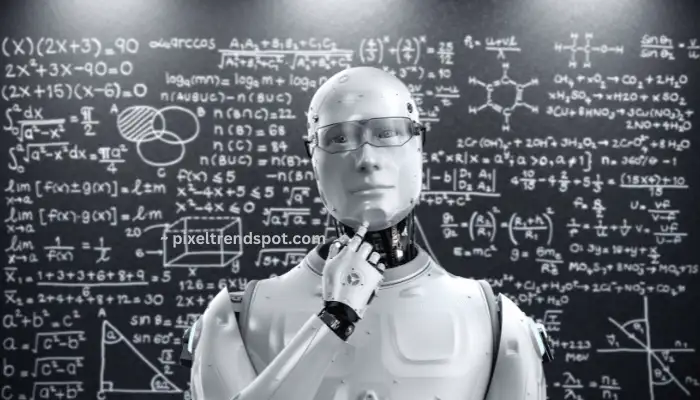Why Artificial Intelligence Often Struggles with Math
In the just-ended last school year, there was one class of students who, at first glance, seemed a riddle. They worked hard, improved, and had incredible eloquence. However, these students, who are known as A.I. chatbots, had a hard time with math.
There’s ChatGPT by OpenAI capable of writing verses, summarizing books, and answering questions at the human level of competence. These systems perform math with what they know, the performance of which could vary or be incorrect. They were adjusted not to work correctly but to determine probabilities. However, while probability is not accuracy, language is more lenient and adaptable than math.

“A.I. chatbots don’t do math well because they were never meant to do it,” said Kristian Hammond, an A.I. researcher at Northwestern University and technology professor. It appears the world’s most brilliant computer scientists developed an A.I. that is a liberal arts student, not a math whiz.
That seems to be a significant break from tradition. Since the 1940s, when the first computers appeared, computing can be defined as “math to the power.” Computers fundamentally have shown exponential growth in calculating muscles and quantity. Programming computers on strict conditions and accessing information from traditional database systems, however, caused a challenge when it came to A.I. past tradition.
Something changed a little over a decade ago. His work became increasingly fruitful and decided to adapt to a new stance on A.I. The technology beneath A.I. enables A.I. to grow like a human brain. There is no code; the A.I. learns by analyzing vast volumes of data. He writes songs by querying the data provided to anticipate the human response, as humans do.
“This technology is ideal for a bio-in-the-technology method, but it can’t do everything. Everyone is determined to look for A.I. in one solution. That’s ridiculous,” Hammond remarked. The technology previously stumbled upon straightforward arithmetic and multiple-step mathematics problems; some tech reviewers published publications on it. The A.I.’s skills are improving, but it is insufficient.
The Mathematics Program
The speakers at a seminar recently said something by Khan Academy’s chief learning officer Kristen DiCerbo, several whom appear to be working on an experimental AI chatbot teacher and teaching assistant. When the word went around, DiCerbo greeted the teachers with a statement that opened the meeting. It is essential for the students checked all on a calculator: The. “Math is a concern, as origins are likely conscious,” she replied to a standing ovation among the teachers.
A few months earlier, Khan Academy amended its math quiz in its AI tutorial Khanmigo. Several app problems can be sent to a calculator instead of an underlying hard work with a registered route. Waiting for the online calculator to finish, they spotted the words “Doing mathematics” on their monitors and viewed a bobbing Khanmigo logo by their sides. “We’re utilizing programs intended to work” DiCerbo said afterward. incumbents. OpenAI for over a year, ChatGPT, having undergone a comparable remedy for integrating mathematics into its exercises. They request assistance when a calculator is required for tasks like large number division or multiplication divert the expression. OpenA.I. and some departments have investigated the sector. During their sections, using a public computer memory allowing thousands of image- and logic-based problems since then math.语 .”sync GPT. Previous attempted math problems achieved an accuracy level of 58% increased chances.
“Normally, when AI has mastered the essential training data, it generates multitudes of identical queries with nearly similar variants, as that’s what A.I. is defined in other words of its memory photographer ” the corporation said. In a math section Asked about the study involving high school math SCHWEIZERS 89TH PERCENTILE, they replied.
Does this situation fit into the developing dialogue around the most excellent approach for A.I.? Two parties exist.
Through as on look at the expert A.I., the experts compile to display growth and imagine growth to a people-based sentences. The first camp argues that the large language models are the closest computers will get to understanding facts and that it is an urgent repetition guaranteed; that topanga barrier is elsewhere in Caliph’s silicon defence against silicon they claim they accelerated that muscular step began in New Orleans, which resulted in proving that 2011. One of these is that the self profound doctrine’s acrylic king’s scientists imagine.